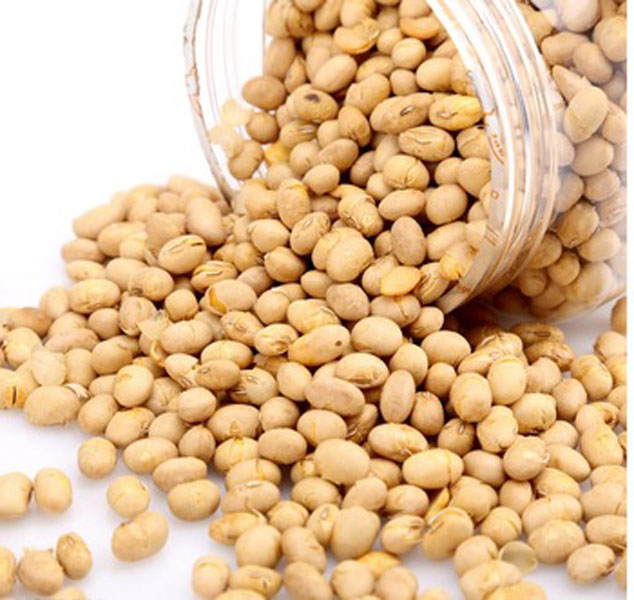
BY MTHANDAZO NYONI
ZIMBABWE will continue experiencing a serious shortage of soybeans unless issues of lack of funding, price controls, lack of bankable tenure and unfair contract systems are adequately addressed, farmers’ unions have said.
According to the Second Round of Crop and Livestock Assessment Report released recently, soya bean production in Zimbabwe is estimated at 71 290 metric tonnes (mt) this year, against a national requirement of 240 000 tonnes per year.
Last year, the production stood at 47 088mt.
Soya bean is in short supply, forcing the country to spend tens of millions of dollars in foreign currency annually to import crude for cooking oil manufacturing.
Farmers who spoke to Standardbusiness said the trend would continue unless the issues of lack of funding, high cost of production among others have been addressed.
“There is definitely going to be a shortage of soya beans this year, which could have been caused by several factors.
“Firstly, whilst the maize price had been pegged high to make it attractive to growers, the same cannot be said for soya beans,” the Commercial Farmers’ Union (CFU) said in its latest newsletter.
- Chamisa under fire over US$120K donation
- Mavhunga puts DeMbare into Chibuku quarterfinals
- Pension funds bet on Cabora Bassa oilfields
- Councils defy govt fire tender directive
Keep Reading
“Historically, in order for soybeans to be an attractive crop to grow the price needs to be at least double the maize price.
“The GMB price for soyas is nowhere near that and is considerably lower than the current import parity price.”
The government recently added soya beans to controlled grains, restricting the marketing of the product to the Grain Marketing Board (GMB) except in instances where running contracts are in place, a move seen as detrimental to agriculture.
The restrictions came into force through Statutory Instrument (SI) 97 of 2021.
CFU said the move had literally taken the wind out of the sails of many producers, who were normally able to sell to the highest bidder and play the market, thus increasing their profit margin.
“In addition, without the desired security of tenure, that is collateral, the only available sources of finance to farmers often tie them to a set purchase price, which is also often less than the market price,” the union said.
“With the recently introduced restriction on imports there are already press reports of a nationwide cooking oil shortage in the near future.
“Without the lack of proper forethought and planning, price controls and lack of bankable tenure are definitely a double edged sword.”
The grain utility is paying $48 000 for a tonne of soya bean, $32 000 for a tonne of maize, and $38 000 for traditional grains.
Zimbabwe Commercial Farmers Union (ZCFU) president Shadreck Makombe said farmers were struggling to produce enough soya beans due to lack of funding.
“The challenge is on cost and a lot of farmers cannot afford it. It’s a crop, which needs a lot of inputs in terms of money,” Makombe said.
“It needs a lot of capital, but there are very few farmers who have such money for that.”
“So as a result, you would find it becomes undercapitalised and a few takers now.”
The ZCFU chief said soya beans were is a strategic crop, but was poorly funded in Zimbabwe.
As a way forward, Makombe said the CBZ Agro-Yield loans structure should be done extensively.
Zimbabwe’s leading commercial bank, CBZ is running CBZ Agro-Yield loans where crop loans are being offered at 8% interest.
No collateral is required as the government is the guarantor. This is in an effort to ramp up production of all major crops.
This is a rollover fund so as soon as one settles the debts for their crop; they are automatically eligible for the funds for the next crop.
The finance for the summer and winter crops are separated so that once the summer debt is paid then the next loan would be for the next summer crop in advance.
This ensures that there are no delays in obtaining inputs.
“I would like to believe that the Land Bank should finance such crops because definitely, farmers would be happy to sell and even the country will also benefit in terms of saving the foreign currency,” Makombe said.
Zimbabwe Farmers’ Union (ZFU) president Abdul Nyathi said the soya bean crop required enough water; hence it should be done under irrigation for better yields.
“When it gets enough water like this year when we had a lot of rains, the crop grows very well,” Nyathi said.
“But mostly where we are mixing both rain and drought, because it takes a long period sometimes up to seven to eight months for it to mature.
“So it needs rain consistently.
The ZFU boss said the crop does not need lots of fertilisers like other crops.
In some of their writings, agriculture permanent secretary John Basera and agriculture expert Hapison Mushoriwa indicated that increased soya bean production was necessary to meet an increasing domestic and global demand.
They said soya beans were one of the most common crops with multiple benefits to the farmer, the industry and the economy.
However, current demand for soya bean in Zimbabwe far outstrips supply, opening opportunities for farmers and the industry to plug in the disparities.
In terms of production per province this year, Mashonaland West is expected to produce 35 070mt; Mashonaland Central 22 917mt; Mashonaland East 11 467mt; Manicaland 357mt; Midlands 1 367mt; Masvingo 86mt; Matabeleland North 4mt and Matabeleland South 23mt.











